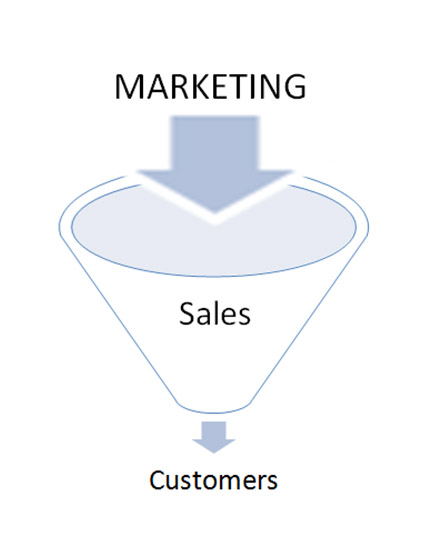For any business to work and work well, all aspects, departments and cogs must be working not only efficiently as a standalone unit, but together in unison, moving toward a single, unified goal, with a strong web of connections crawling throughout the company. Often, departments can be split into separate forces, operating for their own good, as opposed to the overall outcome, and when something like that happens, it damages the entire business, especially when, as is often the case, it occurs between the sales and marketing functions. This disconnect is a problem that is taking place in companies up and down the country, but why is it so important to not only maintain those inter-departmental connections, but strengthen them?

It is common for a disconnect to happen when divisions of a business begin working on a singular or silo’d basis, lacking the input of the rest of the machine, like the wheels of a car being detached from the rest of the components – cogs turn, the engine revs, but there’s no forward motion.
Where the Problems Lie
When the marketing department begin developing ideas and executing campaigns and initiatives without the whole company behind them, without the sales team’s input or buy-in, the wheel-less vehicle effect takes place. Knowing what to do with the leads generated from a marketing drive from a sales perspective is imperative to capitalizing on the opportunities created by the effective strategy of a different department.
For your customers and clients to trust you, you’ll need to present a confident, unified approach and the disconnection is inherently detrimental to every aspect of that statement.
Ensuring the disconnect between sales and marketing doesn’t happen can take a variety of forms, and these may be left down to the individual workings of each business, however the overall effect should remain the same – a perpetual and rich dialogue and communicative landscape that addresses all matters concerning campaigns, goals, success, and development.
Possibly the most useful tip for addressing this equilibrium is:
Establish a routine driven communicative process between the marketing department and the sales department.
With this in mind, you may create a rigorous strategic plan to ensure the two divisions talk to each other, setting aside times, instances and workshops wherein the input of individuals from every department can be heard and put forward and so each area is aware of the other’s work and motion. Break each of them out of their shells and pin them on the same board, they’re one team, and two parts of one well-oiled machine – ensure they know it!
The Results
Consistency is key, and when it is achieved in this area you’ll see the resultant effects echoing right through to your leads and conversion figures.
Once you’ve managed to thoroughly align both your sales and your marketing departments, you’ll strengthen the way you touch your prospects, capitalize on great opportunities that come from big events such as product launches and chase up the right leads. Instead of wasting valuable openings with leads because of miscommunication, you’ll be able to catch a huge percent more, significantly increasing your figures and your results.
The sales and marketing disconnect is a rapidly growing issue, however it’s a problem that can easily be addressed by stepping back and employing new habits and new elements to the culture in your business. Don’t let leads lay low, step up your inter-department communication today!
This article was written by Rob Vicars on behalf of GCL Direct; providing effective and definitive sales lead generation through the art of conversation for your business!

